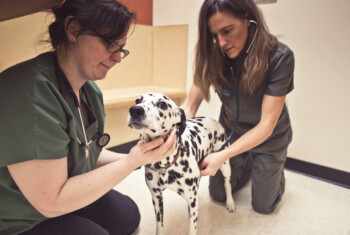Dermatophytosis (ringworm): Fungal infection of the hair and skin.
Three species of ringworm cause the majority of infections: Microsporum canis, Microsporum gypseum and Trichophyton mentagrophytes.
The most common sources of infection are other infected pets, rodents, contaminated environments and occasionally the soil. Some animals may act as carriers of the disease with no visible lesions  (asymptomatic carrier). This is more commonly seen in cats with M. canis infections.
(asymptomatic carrier). This is more commonly seen in cats with M. canis infections.
M. canis can also live in the environment for at least 13 months, making re-infection a common problem. Other pets may come in contact with ringworm but never develop an infection, which involves more than just exposure to the fungus. Host factors such as immunity and stress are also involved.
People who come in contact with infected animals are at risk of developing ringworm. As with animals, many individuals who are exposed will not develop an infection. Please consult your physician concerning this matter. You should also wash your hands well after handling your pet and use good hygiene.
Signs and symptoms.
The clinical signs of infection are most commonly hair loss, broken hairs and increased pigmentation of the skin. Other signs may include red bumps, itching, crusting, scaling and occasionally pus. When the nails are affected they may be broken and brittle, which may result in loss of nails or nail deformities.
Diagnosis and therapy.
The diagnosis of ringworm is based on a Wood’s lamp examination, fungal cultures and/or a skin biopsy. Cultures may take up to 2 weeks to grow.
Therapy for ringworm includes elimination of organisms contaminating the environment, treatment of affected pets and control of asymptomatic carriers. The termination of treatment is based on physical exam and having three negative fungal cultures 2-3 weeks apart.
Environmental control.
- Isolate or confine affected pets
- Vacuum daily – throw out bag (put in a sealed bag)
- Clorox solution (1:20 dilution) on hard surfaces· Change air filters every 14 days
Treatment.
- Clip hair – entire body in severe cases or long haired cats
- Topical therapies (shampoos, lotions, creams)
- Lime sulfur dip solution (1 oz per quart of water) twice weekly – topically sponge entire body
- Oral medication

For more information on this subject, speak to the veterinarian who is treating your pet.


